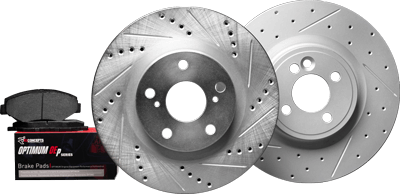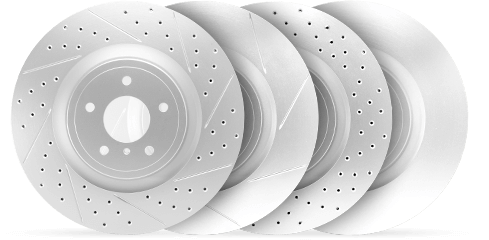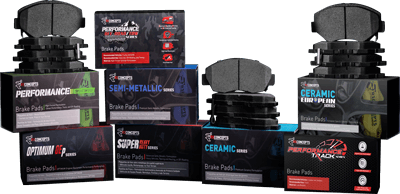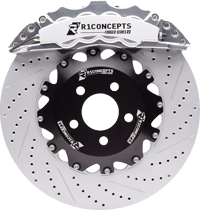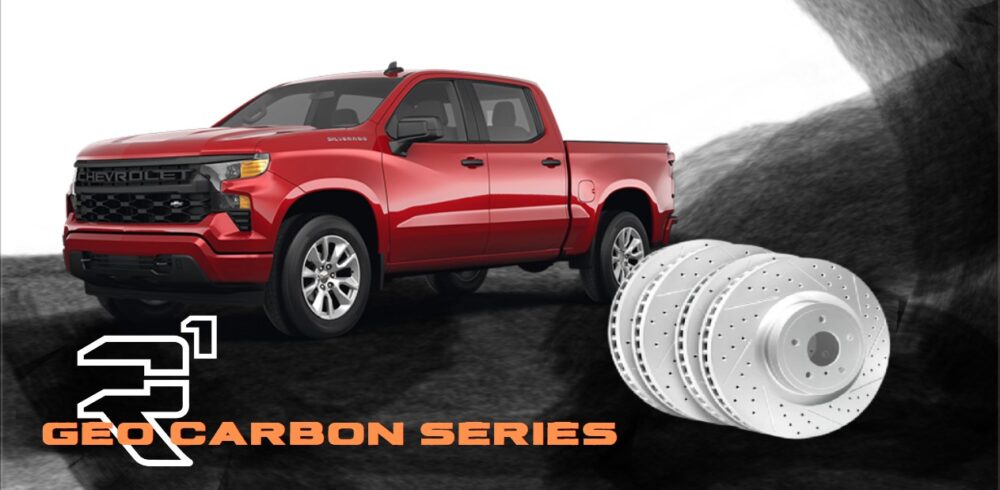Looking for the best brake rotors for Chevrolet Silverado 1500? This guide cuts through the clutter, focusing squarely on rotors that can withstand the demands of your Silverado—whether you’re towing, off-roading, or just cruising. We’ll dissect performance, durability, and value to bring you a handpicked selection that ensures superior stopping power without overspending, tailored to how you drive your truck.
Key Takeaways
Choosing the correct brake rotors for your Silverado 1500 enhances safety and performance, especially when matched with compatible brake pads for your driving conditions.
There are various brake rotor options available, with OEM-style being adequate for regular use and slotted/drilled rotors being better for heavy-duty or performance driving. Material choice (cast iron vs carbon composite) affects performance, cost, and durability.
Proper installation and regular maintenance of brake rotors, including correct torquing and alignment as well as routine inspections, are key to preserving braking efficiency and extending the life of the components.
Choosing the Right Brake Rotors for Your Silverado 1500
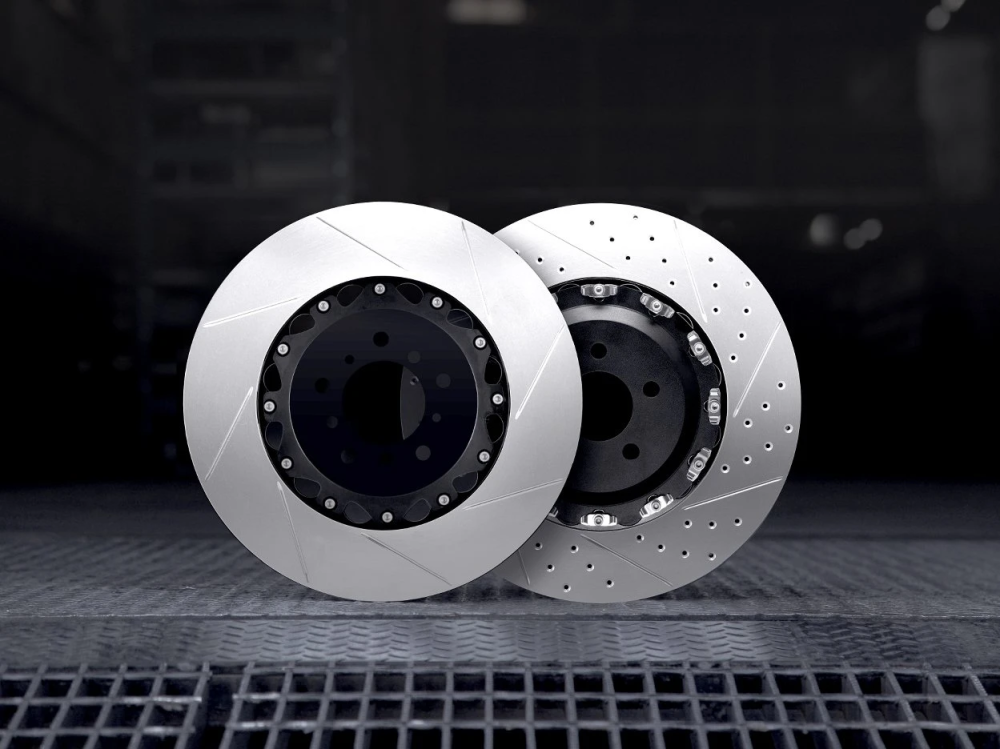
choosing the right brake rotors are important for the stopping power of your Chevrolet Silverado 1500, Getting the right type of rotors is not only essential for performance, but for safety. Understanding the different types of rotors and materials is key to finding the perfect match for your truck’s needs, whether it’s daily driving or heavy-duty tasks. Pairing your rotors with compatible brake pads ensures efficient stopping and longevity of your brake system, making knowledge a powerful tool in the selection process.
Understanding Rotor Types
If you’ve just gotten your hands on a Silverado 1500, you’re driving a powerhouse of a truck that needs the right kind of brakes. Depending on what you use your truck for, the type of brake rotors you’ll need can vary. For everyday things like commuting or running errands, the standard OEM-style smooth rotors are just fine. They’re made to meet the needs of most drivers out there.
But if you’re looking to give your truck’s stopping power a little boost, think about getting slotted rotors. Brands like R1 concepts make these, and they’re awesome for drivers who want a bit more oomph from their brakes. These rotors are great at getting rid of heat and gas that builds up when you’re driving fast, making them a solid choice for those who love a bit of speed.
And if you’re someone who really likes to push their truck to the limits, drilled rotors could be your best bet. They’re designed for heavy-duty action and help get rid of the gas that comes from hard braking, which means less brake fade and better overall performance.
Material Matters: Cast Iron vs. Carbon Composite
Once you have decided which rotor type fits your truck, it’s important to look at what the rotor is made of. There are mainly two materials used for brake rotors: cast iron and carbon composite. Cast iron rotors are popular because they are good at handling heat, are strong, and last a long time. They are also less expensive because they are cheaper to make.
Carbon composite rotors should not be overlooked. They are made for the best performance at normal driving temperatures by using a special mix that includes silicon carbide. These rotors have many good points like being very resistant to rust and not changing shape easily. They also make less brake dust and noise when you use the brakes. Although they cost more, their high performance makes them worth the money.
Balancing Cost and Quality
When considering the topic of materials and their performance, it’s important to address the issue of cost. Carbon ceramic discs carry a higher price tag than conventional iron discs. There is value in this expense. The intricate and protracted production process required for carbon ceramic discs not only raises their cost but also enhances their quality and lifespan.
Consequently, if your goal is lasting performance and your budget allows for some flexibility, opting for carbon ceramic discs may be an excellent choice. Ceramic pads make an ideal accompaniment to these discs, enhancing overall braking efficiency.
Pad Compatibility with Rotors
Selecting the appropriate brake rotors for your Silverado 1500 extends beyond just the rotor itself. It includes a careful consideration of the brake pads too. The overall performance and durability of your braking system are greatly influenced by how well your brake pads and rotors work in unison. Various materials and designs mesh better, delivering superior efficiency and extended life for both components.
To confirm that a set of rotors is suitable for particular pad types— it’s important to consult either manufacturer specifications or reliable retail websites. It’s crucial to pair your brake pads with compatible rotors to maintain excellent braking capability while also avoiding early deterioration of these essential parts.
Top Picks for Silverado 1500 Brake Rotors
Exploring in detail, it’s essential to choose high-quality brake rotors for the Silverado 1500 to enhance your Chevy’s braking power. R1 Concepts stands out as a brand that offers specialized brake rotor options tailored to the different driving needs of the Silverado 1500.

R1 Concepts understands the diverse requirements of Silverado drivers, providing a spectrum of rotors designed for various applications. For those who use their Silverado 1500 for daily driving and require reliable stopping performance, R1 Concepts offers OEM-style rotors that ensure a direct fit and dependable functionality.
For Silverado owners who demand more from their vehicle, whether it’s for towing heavy loads or occasional spirited driving, R1 Geo Carbon Drilled and Slotted Rotors are the go-to choice. These rotors are engineered to handle high heat and provide better outgassing, ensuring consistent braking even under strenuous conditions.
Moreover, for the ultimate in durability and performance, R1 Concepts offers their premium line of drilled and slotted rotors. These are ideal for the Silverado 1500 drivers who subject their trucks to the most demanding situations, such as frequent off-roading or heavy-duty work. The drilled holes and slots work synergistically to significantly reduce heat and maintain optimal braking efficiency.
In essence, R1 Concepts provides a comprehensive lineup of brake rotors that cater to every Silverado 1500 driving style. Their commitment to quality and performance ensures that you can find the perfect rotor that not only meets but exceeds your expectations.
Installation and Maintenance Tips
Upon choosing the perfect brake rotors for your Chevy Silverado 1500, you’ll proceed with their installation. Ensure that you are equipped with essential tools such as a jack, jack stands, and a torque wrench prior to starting. It’s imperative during this process to adhere strictly to the specified torque settings provided by the manufacturer when tightening wheel bolts. Doing so is vital for achieving peak rotor performance.
The true work begins post-installation: it’s critical to ensure that your new rotors are correctly aligned in order to prevent any imbalance or vibration while driving. Consistent maintenance checks of your rotors play a major role in maintaining seamless operation of your vehicle. By regularly clearing away grime, dirt, and rust from the surface of each rotor and circumventing abrupt braking—especially soon after installing new ones—you allow proper ‘bed-in’ which helps avoid warping and thereby prolongs their life span.
Step-by-Step Installation Guide
Ready to fit your new brake rotors? Follow these steps carefully.
Begin by slightly loosening the lug nuts.
Use a jack to elevate the vehicle off the ground.
Ensure stability with jack stands under the vehicle.
Take off the wheels after lifting.
Unbolt and remove the caliper from its mount.
Suspend the caliper without putting strain on or harming the brake hose.
After examining or installing a new rotor, it’s important to reassemble all of your braking components. This includes inspecting brake pads and associated hardware for any damage, and ensuring that you follow every torque specification provided by the manufacturer during the assembly process for safety reasons.
Once everything is correctly reassembled, taking your vehicle out for a test drive is crucial. This allows you to verify that every part of the brake system is functioning properly after maintenance, including any parts that were replaced such as the rotor. This step ensures maximum safety on the road during various driving conditions.
Preventing Rotor Warping and Wear
It is essential to take care of your newly installed brake rotors to keep them functioning optimally. To avoid rotor warping, which could hinder performance, you should:
Periodically check the condition of brake pads, rotors and calipers for signs of wear or damage.
Follow the manufacturer’s guidelines for breaking in new brake pads correctly.
Apply brakes softly rather than abruptly whenever possible.
Keep from placing your foot on the pedal unless braking is necessary.
Avoid engaging in extensive harsh braking that can cause extreme heat build-up.
Adhering to these strategies will help mitigate rear rotor overheating and subsequent warping. Keeping an alignment list aids in systematically recording preventive steps taken as well as instituting a new thread for exchanging ideas about enhancements. Revisiting old threads may reveal helpful knowledge from earlier experiences. Implementing tools like table undo drafts are useful when documenting various modifications and brainstorming sessions.
To ensure longevity and optimum functionality of your vehicle’s brake system, which prevents issues such as rotor warping, follow these additional maintenance tips.
Regularly verify both fluid levels and quality within the system
Embrace slowing down naturally before applying brakes. This lessens strain on both pads and rotors.
Should vibrations occur during braking episodes promptly seek expertise to investigate potential concerns with rotor integrity
Regular Inspection and Care
Consistently checking the components of your brake system is crucial for identifying and addressing problems before they become severe, ensuring the safety of your vehicle remains intact. It’s especially important to keep an eye on elements like brake pads, rotors, and calipers to avoid issues such as warped rotors that can hinder braking efficiency.
To maintain the integrity of your braking system and extend the lifespan of its brake pads, it’s advisable to replace your brake fluid routinely—every two years or 25,000 miles. Doing so not only keeps your brakes in excellent condition, but also guarantees peak performance from your Silverado 1500.
Summary
Choosing the right brake rotors for your Silverado 1500 isn’t just about enhancing performance. It’s about ensuring safety. Whether you’re cruising down the highway or navigating challenging terrain, your brake rotors play a crucial role. So take the time to consider your options, from the type and material to the cost and compatibility with brake pads. And once you’ve made your choice, remember to install and maintain your rotors properly. Because when it comes to your Chevy, every detail matters.


